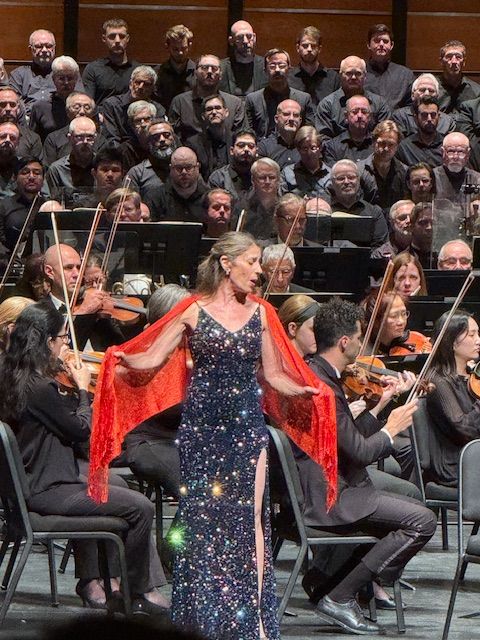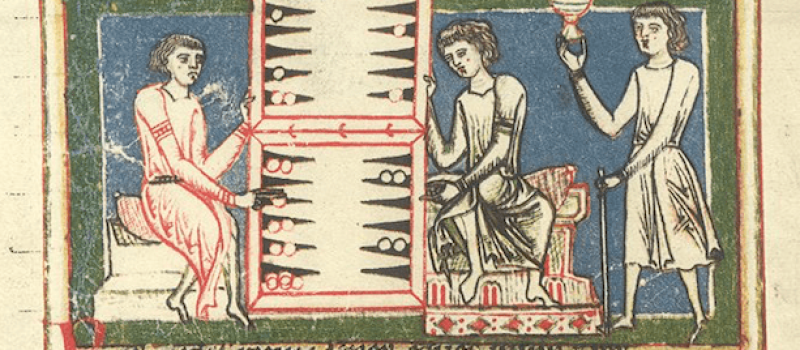Carl Orff’s most famous composition, Carmina Burana, is a complex piece of music that defies any ordinary review. Our great Austin Symphony Orchestra performed the entire hour-long piece at their most recent Masterworks Series concert.
Aficionadi of chamber music treasure Orff’s authorized version for choir, 2 pianists, percussion and a trio of soloists. What we heard here was the full orchestral version. Austin Symphony teamed up with the powerful vocal backing of Chorus Austin: a huge gathering that filled the Long Center stage to bursting.
Carmina Burana is a mélange of exuberant drinking songs, the confessions of sinners, hymns to gambling and gluttony, a litany to Lady Luck, and (most famously) the tenor voice of a swan being roasted over a fire. That particular 40 seconds has been cutely termed “The Rock Anthem of the Classical World.”
This grand sweep of music premiered in Frankfurt, Germany in 1937, on the eve of World War II. Orff did not invent all of this himself: a songbook that contains 250 poems and songs from Medieval times was discovered in 1803. He brilliantly decided to set some of it to music that exhibit little or no harmonic development, relying instead, “as the programme notes state, “on terse melodic motives and rhythms derived from the meter of the poems themselves. Orff creates stunning instrumental interludes and accompaniments whose variety and vivid tone color break the monotony of the simple melodies.” As for the Medieval poets, they called themselves goliards (mostly defrocked monks and minstrels). They were notorious for their rioting, gambling and intemperance. The poems amount to an uninhibited celebration of the pleasures of life, bed, bawdiness and particularly, love.
However he did it, Orff molded all this into a work that is performed at least once every day somewhere in the world. The effect at the Austin concert was mesmerizing and at times overwhelming in its dramatic potential. A terrific performance, and surely the highlight on the current season for the Austin Symphony.
One member of the audience told me “It was nice to see some innovation of style instead of the safe haven of Beethoven. It would be nice to have more guest conductors for part of the concerts so the style on offer is more varied.”
For Carmina Burana, the audience really needed the benefit of the English translation on a screen, as is usually done for performances of opera. Helpfully, the entire original Latin and German text was given in the programme, along with an English translation. It was a bit distracting, however, to look down at the text and then refocus on the performers.
The repartee between the two male soloists (Brian Giebler, tenor; and Joseph Lattanzi, baritone) helped enliven the hour-long performance. It was most welcome, as evidenced by audience applause after each of their solos. Having soloists comically react to the music is a notable departure from how they usually portray themselves. The trio was completed by Hila Plitmann, whose combination of singing and acting (with a red shawl as a prop) was entrancing (see photo).

The concert opened with a piece that let Chorus Austin shine on their 60th anniversary. More than that, it was World Premiere. Composed by Melissa Dunphy, it blended both Latin and English lyrics, drawing inspiration from Carmina Burana, another dual-language work. Ryan Heller, conductor of Chorus Austin, clearly revelled in his opportunity to highlight to depth of his chorus. Many people saw them perform Handel’s Messiah last December, another great showcase for their talents. They can next be heard Apr 12 and 13 at the Cherrywood Center.
Visit www.chorusaustin.org for tickets
The other work performed, Concerto for Orchestra by Kevin Puts, is a new composition from 2022. This is only the third time it has been heard at any symphony in the country. The first movement exhibits turbulence, with the strings in competition with the horn section. Puts writes that it was inspired by the school shooting at Uvalde in May 2022. The second movement, which was inspired by 14th century hunting music (another nod to Medieval music that is rarely heard at a symphony concert) is rich with oboes and the xylophone.
The third movement, entitled Music Box, has a sense of scurrying about it. It features a range of instruments: the percussion section, led by the harp and celestina, yielding at last to the woodwinds. The fourth movement, Toccata, features an unusual combination of the harp and the larger string instruments. Then the horns take over, solo, followed by an intercession of the piano. Drums herald a new theme in the fifth movement, Sicilienne, which becomes dominated by the piano. The entire orchestra is caught up in a maelstrom of sound. The Concerto ends with a brief quotation from Mozart’s Marriage of Figaro. Whether this particular composition appeals to the listener or not, it is an affirmation that the Concerto form is not dead.
For future concerts, visit www.austinsymphony.org
lead photo: Illustration from Codex Buranus manuscript
